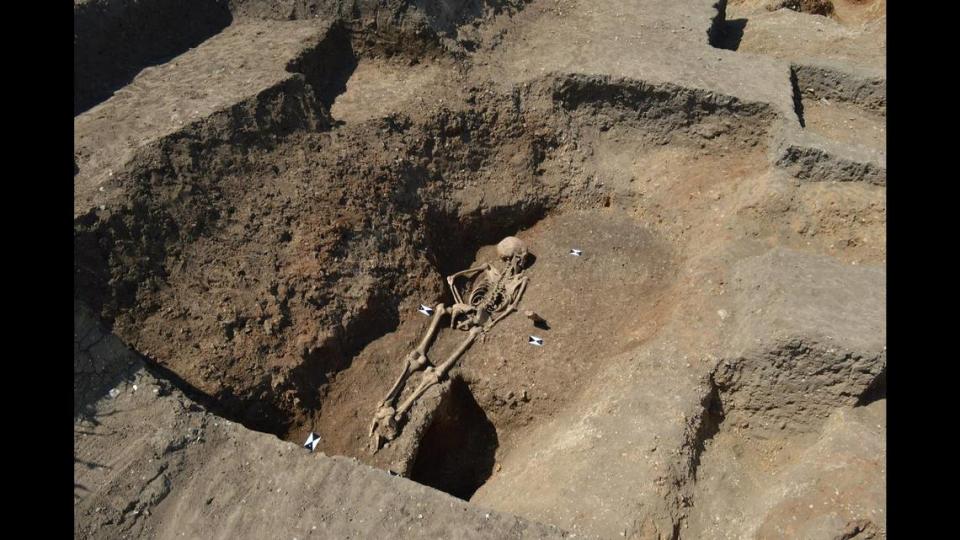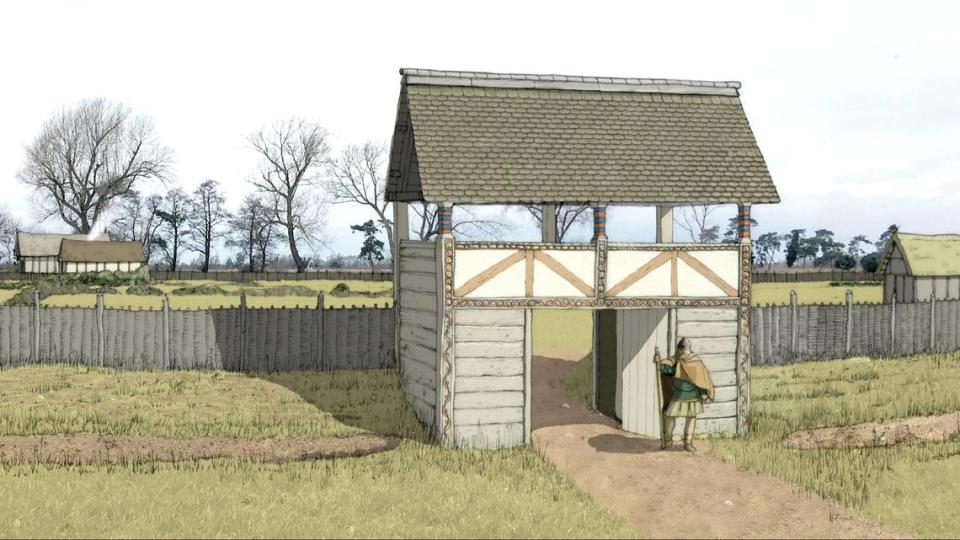Medieval teen girl found buried face down with ankles tied. Experts have a theory why
Some 1,000 years ago, a 15-year-old girl died in England. Her feet were then bound and she was placed face down in a pit where she was left until about 2018.
That’s when a team of archaeologists near the village of Conington, Cambridgeshire, discovered her remains — and her mysterious burial, according to an Aug. 14 news release from the Museum of London Archaeology.

The unusual teenager’s grave dates to the ninth century, around the time when inhabitants of the settlement began leaving the area, experts said. As members of the ancient civilization prepared for their departure, they removed their “elaborate entrance gate” and filled one of the remaining pits with the girl’s body.
Archaeologists said the girl was buried face down, and evidence suggests that her ankles were bound. Now they have a theory explaining why.
“The position of her ankles suggests they may have been tied together,” Don Walker, a senior human osteologist with the museum, said in the release. “This implies that the community took extra measures to ensure she could not ‘return’ from the grave.”
A14 Conington Burial by MOLA on Sketchfab
While there weren’t set burial traditions at the time, bodies were typically arranged face up, according to the museum.
The girl’s face down burial “marks this young woman out as different,” experts said. Analysis of her bones showed that she suffered from childhood malnutrition and a spinal joint disease exacerbated by hard manual labor, suggesting she was of a low social status.
Experts haven’t identified a cause of death, but they said it’s likely she died suddenly or unexpectedly. She is believed to have died sometime between 680 and 880.

The girl’s burial in the entry gate’s pit is also significant, according to researchers. A similar burial — a woman buried face down in a settlement’s boundary ditch — dating to the late eight to ninth century was found about 30 miles away.
“We will probably never know exactly how this young woman was viewed by the community she grew up in, but the way she was buried tells us she was almost certainly seen as different,” Walker said in the release. “Her burial rites may have reflected the nature of her death, or her social identity or that of her family.”
The settlement in Conington — which means King’s Town — was probably abandoned as the Kingdom of Mercia’s power began to dwindle in the early ninth century, experts said. The young woman’s burial could have been “a symbolic final closure of the site.”
Conington is about 80 miles north of London.
Decades-long mystery over 2,000-year-old grave in England stumped experts — until now
Ancient burials at church lead to unique finds — including dentures. See the discoveries
Massive burial site tied to Mayan deity is uncovered — with some bodies headless

